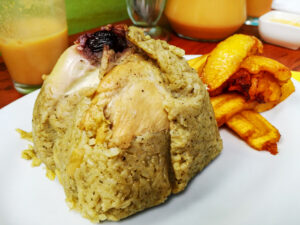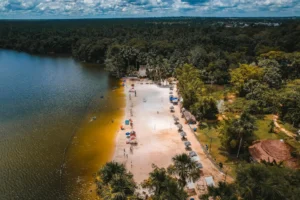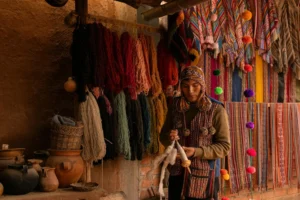The dances of the Peruvian highlands are a cultural manifestation that reflects the history and traditions of Andean communities. These artistic expressions have evolved since pre-Hispanic times, incorporating European and African influences, and have remained alive throughout the centuries.
History of the Dances of the Peruvian Highlands
The dances of the Peruvian highlands have deep roots in the pre-Hispanic cultures of the Andes. These artistic expressions were essential in religious and agricultural rituals, reflecting the connection with nature and the gods. With the arrival of the Spanish in the 16th century, the dances transformed as they merged with European elements, integrating aspects of Catholic religion and creating new cultural forms.
Despite the changes, these dances have preserved their ancestral roots, maintaining values such as respect for ancestors and the spiritual connection to the land. Today, they represent more than art and tradition; they are a symbol of identity and cultural resistance. Every movement, costume, and melody reflects the essence of the Andean peoples, conveying stories and customs that have endured over the centuries and strengthening their cultural legacy.
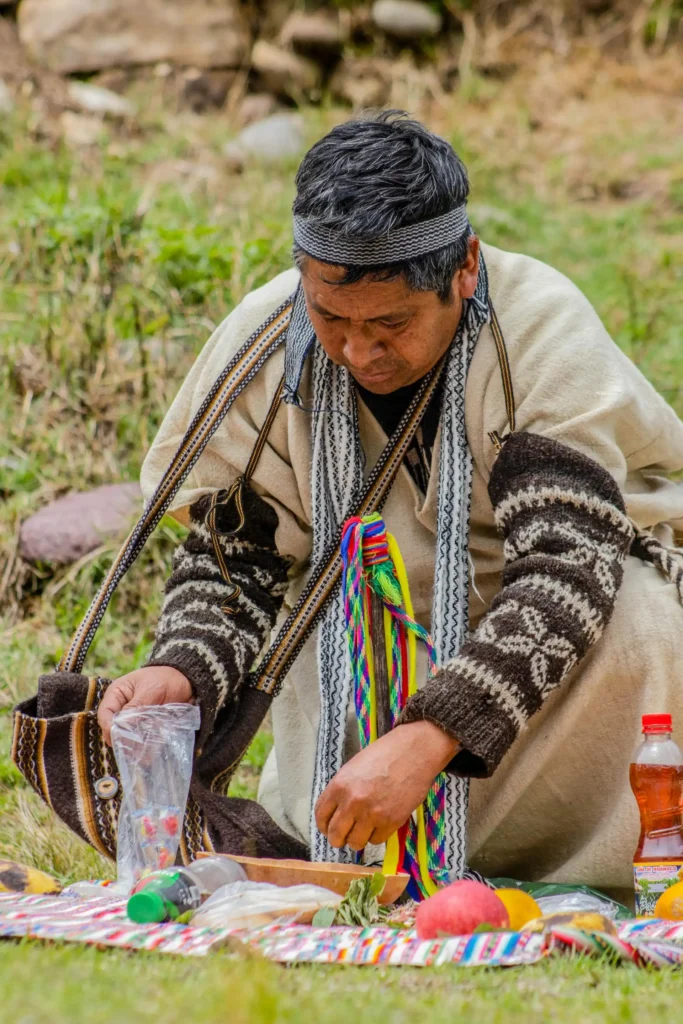
Main Characteristics of the Dances of the Peruvian Highlands
The dances of the Peruvian highlands stand out not only for their movements and music but also for the striking costumes and accessories worn by the dancers. Each element of the attire holds a special meaning and represents the history and traditions of the region.
Costumes and Masks
- Costumes and masks are essential in many dances of the highlands, combining aesthetics and symbolism.
- The masks represent figures from the Andean worldview, such as animals, spirits, or mythical characters. For example, in La Diablada, these masks symbolize demonic figures that depict the conflict between good and evil through dance.
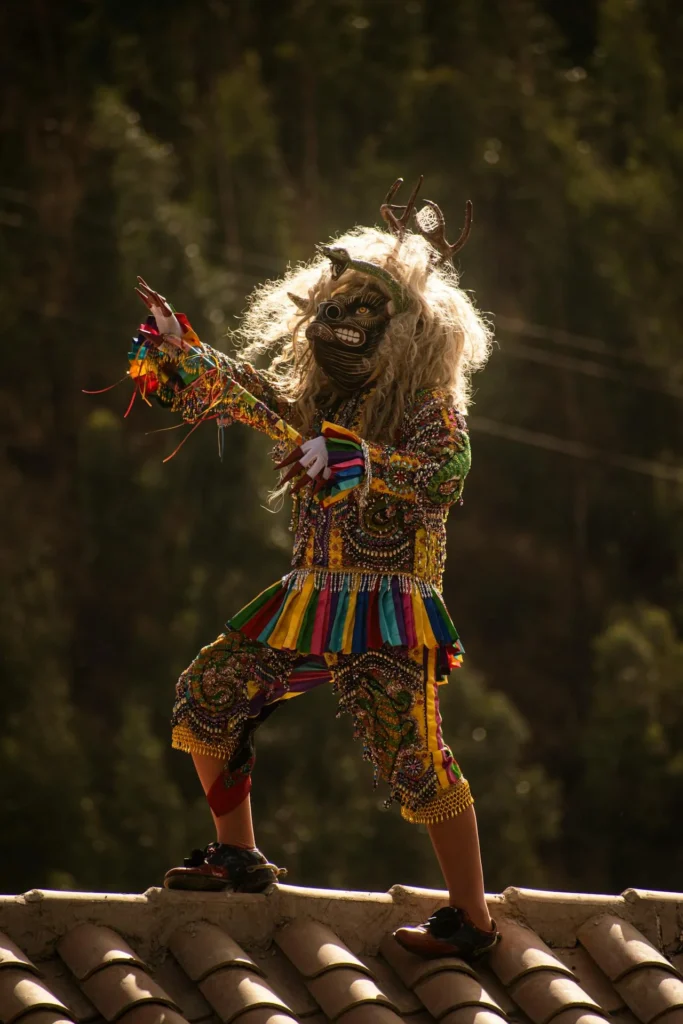
The Highland Poncho
- The highland poncho is a traditional garment made from alpaca or sheep wool.
- Worn primarily by men, the poncho is not only a piece of clothing for warmth but also a symbol of connection with nature.
- The colors and designs vary by region, reflecting the cultural richness of the Andes.
Hats, Boots, and Accessories
- Hats, boots, and accessories such as scarves and chullos are key elements of the attire.
- Hats, often decorated with feathers or ribbons, vary in shape and material depending on the dance. Boots are essential in dances like the Scissors Dance, enabling jumps and acrobatic movements.
Main Traditional Dances of the Peruvian Highlands
The Peruvian highlands are a melting pot of traditions and artistic expressions that reflect the cultural richness of its communities. Below are some of the most representative dances:
Huayno: The Ancestral Rhythm of the Andes
Huayno is more than just a musical genre; it is a profound expression of Andean identity that has transcended generations. With roots in the ancient civilizations of the Andes, this rhythm blends traditional melodies, native instruments like the quena and charango, and lyrics filled with deep emotion.
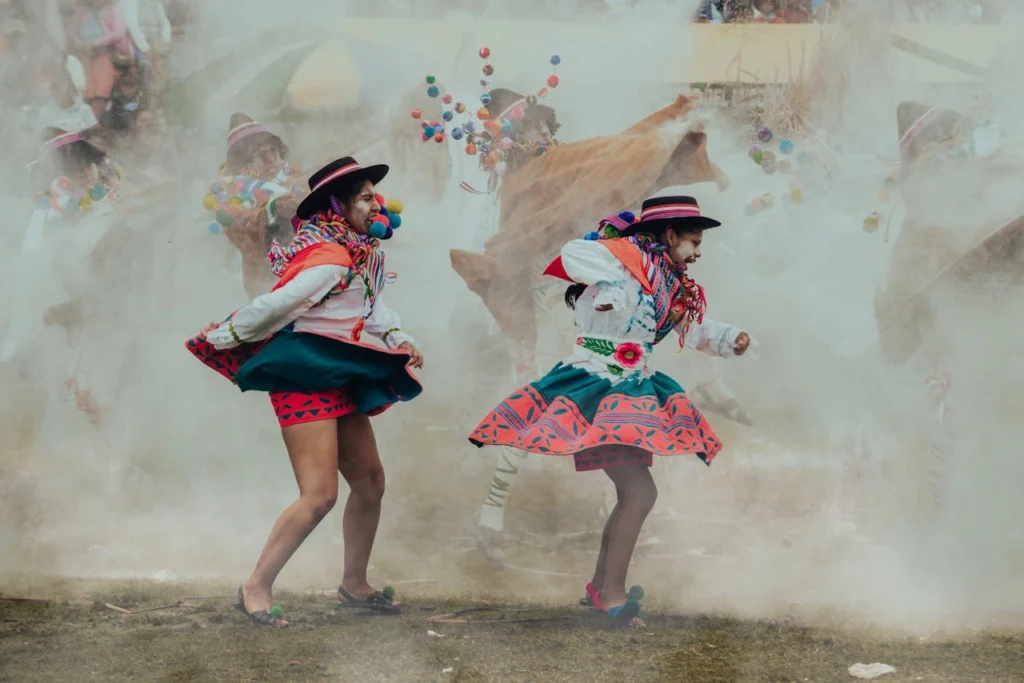
La Diablada: Between Faith and Folklore
The Diablada combines elements of the Andean worldview and Christian symbolism. The dancers, dressed in devil costumes, represent the battle between good and evil. This dance is especially notable during the Virgin of Candelaria festival in Puno, where hundreds of participants join in a vibrant procession.
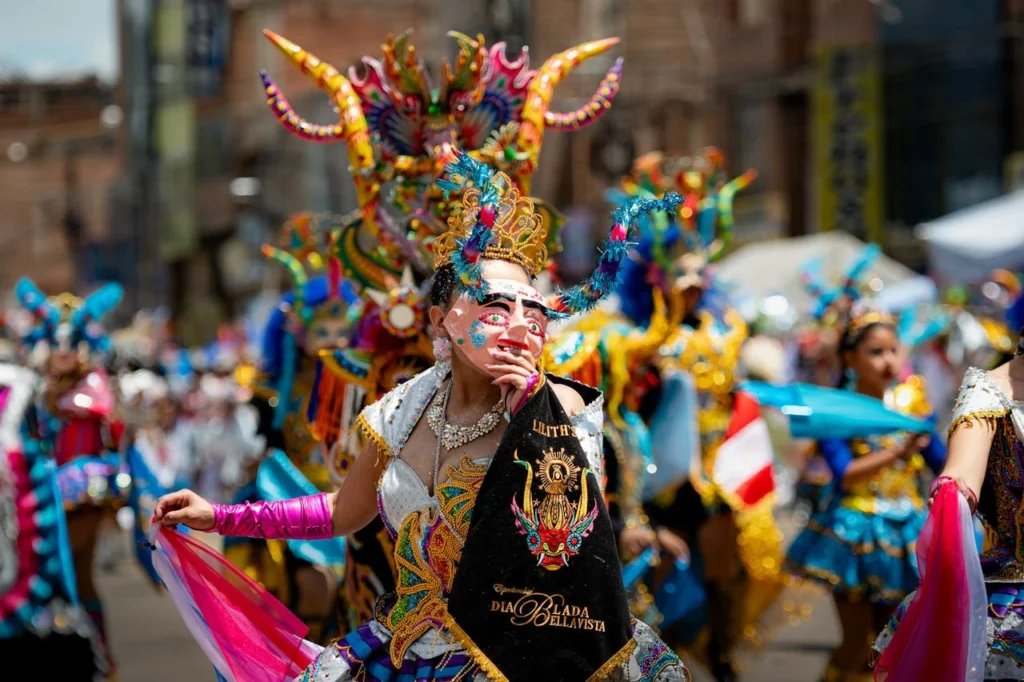
Scissors Dance: Magic and Skill
The Scissors Dance is one of the most spectacular dances of the Andes. In this dance, the performers, known as “scissors dancers,” execute acrobatic movements and showcase their skill while holding metal scissors in one hand, producing a distinctive sound as the two blades strike together. This dance is a display of physical ability and endurance, and it also carries a mystical element, as it is believed that the dancers make a spiritual pact to perform the demanding movements of the dance.
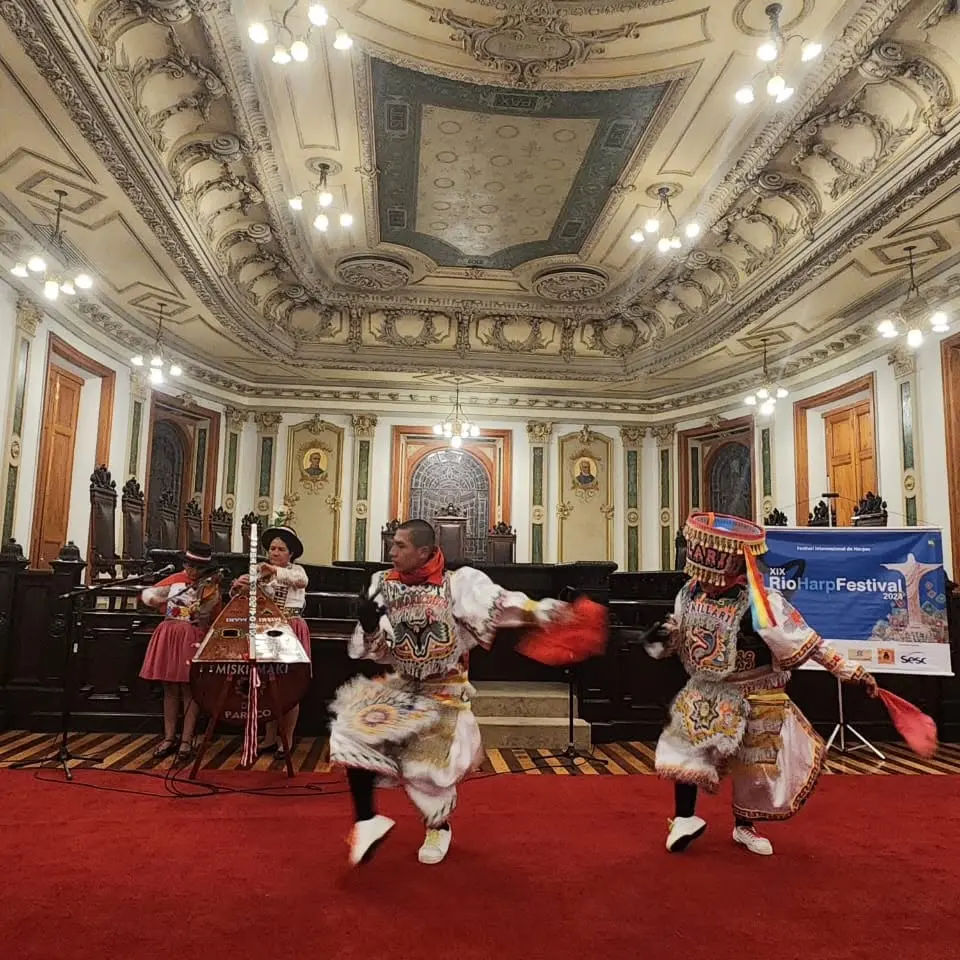
Huaconada: Dance of the Guardians
Originating from the town of Mito in the Junín region, the Huaconada was declared Intangible Cultural Heritage of Humanity by UNESCO. The “huacones” represent the ancient guardians of the town, imposing respect and authority with their movements. The dancers, wearing masks and carrying whips, perform the dance at the beginning of each year, symbolizing the renewal and protection of the community.
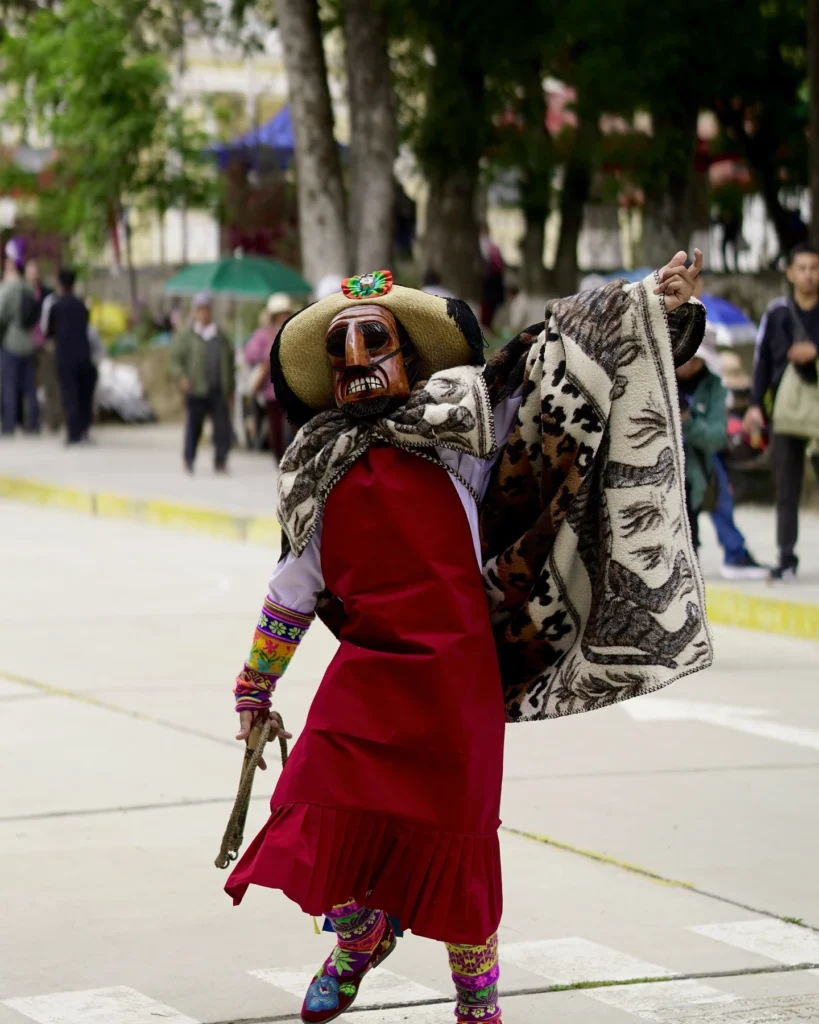
Allpa Llankay: Tribute to the Earth
The Allpa Llankay is a dance that pays homage to Pachamama, or Mother Earth. Participants celebrate the agricultural cycle and give thanks to the earth for the fruits it provides. The costumes often include elements representing agriculture, such as corn stalks or coca leaves, and the music is accompanied by wind instruments.
Avelinos: The Dance of Rebellion
The dance of the Avelinos is an expression of resistance and struggle, inspired by indigenous rebellions. It represents the combative spirit of the highland peoples, with dancers wearing costumes that evoke ancient warriors and performing movements symbolizing the defense of their territory and traditions.
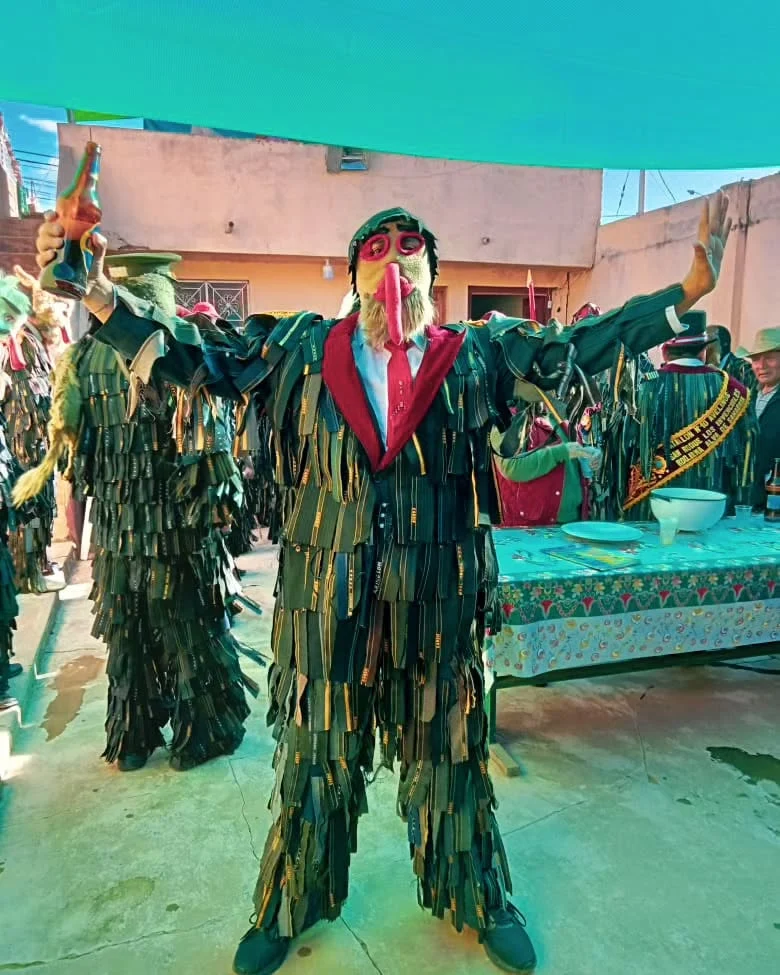
Sara Kutipay: The Corn Festival
The Sara Kutipay, or Corn Festival, is a dance that celebrates the corn harvest, a staple food in the Andean diet. Participants give thanks to the earth for the abundance of crops and celebrate with joy and devotion. The costumes are adorned with corn stalks, and the music is accompanied by songs expressing gratitude and a connection to nature.
Cultural Importance of Dances in the Peruvian Highlands
The dances of the Peruvian highlands are much more than simple artistic expressions; they are an essential part of the identity of Andean communities. Through dance, the people convey values, beliefs, and traditions, reinforcing their sense of belonging and unity. These dances are primarily performed during religious and community festivals, where they serve as a form of gratitude to Pachamama and the apus for the protection and abundance of the land.
Every movement, costume, and melody in the dances is a manifestation of Andean history and worldview, connecting past generations with the present and future. Furthermore, the dances of the Peruvian highlands have achieved international recognition, attracting tourists and scholars eager to understand and appreciate the rich cultural heritage of this region. The dances, therefore, are not only an act of cultural preservation but also a window to the world, allowing the sharing and celebration of the richness of Andean culture.
